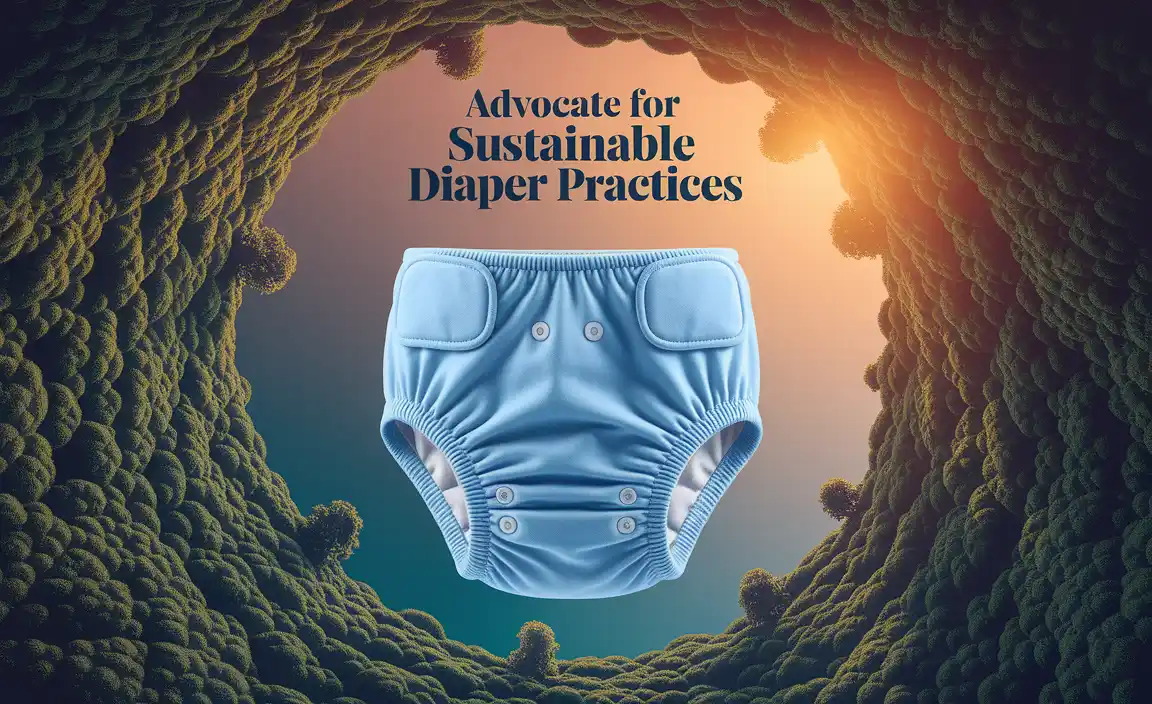Choosing adult diapers with skin-friendly materials like cotton, breathable fabrics, and gentle absorbents is key to preventing irritation and ensuring comfort. These features promote airflow, wick away moisture effectively, and minimize contact with harsh chemicals, keeping skin healthy and dry during use.
Adult Diapers With Skin-Friendly Materials: Essential Comfort for Confident Living
Dealing with incontinence can sometimes feel like a journey with unexpected detours, especially when it comes to personal comfort. The right adult diaper can make a world of difference, offering security and dignity. But sometimes, the materials used can cause a bit of discomfort, leading to rashes or irritation. It’s a common concern, and thankfully, there are fantastic solutions available. We’ll explore how to pick adult diapers made with materials that are gentle on your skin, ensuring you feel comfortable and protected, no matter where life takes you. Let’s dive into finding the perfect fit for your peace of mind.
Why Skin-Friendly Materials Matter in Adult Diapers
When we talk about adult diapers, comfort and skin health are just as important as absorbency and leak protection. Our skin is our largest organ, and it deserves gentle care, especially when covered for extended periods. Traditional diaper materials can sometimes trap moisture and heat, creating an environment where irritation and infections can thrive. This can lead to redness, itching, and discomfort that detracts from your quality of life and confidence.
Choosing adult diapers specifically designed with skin-friendly materials addresses these concerns head-on. These products prioritize breathability, softness, and hypoallergenic properties to keep your skin happy and healthy. It’s about selecting a product that supports your well-being, not just manages a condition.
Understanding Skin Irritation and Incontinence
Skin irritation associated with incontinence, often referred to as incontinence-associated dermatitis (IAD), is a common and uncomfortable issue. It happens when skin is overexposed to moisture, friction, and irritants found in urine and feces. Even with effective adult diapers, managing moisture is crucial.
Several factors contribute to skin irritation:
- Moisture: Prolonged exposure to wetness softens the skin, making it more vulnerable to breakdown.
- Friction: The rubbing of the diaper against the skin, especially during movement, can cause chafing and tears.
- Irritants: Urine and feces contain enzymes and chemicals that can break down the skin’s natural barrier.
- pH Imbalance: Healthy skin has a slightly acidic pH. Moisture and irritants can alter this, making the skin more susceptible to damage and infection.
- Allergies or Sensitivities: Some individuals may react to the dyes, fragrances, or specific materials used in certain adult diapers.
The good news is that by selecting products made with the right materials, you can significantly reduce the risk of IAD and ensure your skin remains in optimal condition.
Key Skin-Friendly Materials to Look For
When you’re shopping for adult diapers with skin-friendly materials, keeping an eye out for specific components can guide your choice. These materials are chosen for their ability to be gentle, breathable, and non-irritating.
1. Breathable Outer Layers
The outer cover of a diaper plays a vital role in preventing moisture buildup. Breathable materials allow air to circulate freely, which helps to keep the skin dry and cooler. This is crucial for preventing the kind of environment where irritation thrives.
- Why they’re good: Promote airflow, reduce heat and humidity, minimize the risk of moisture-related skin issues.
- Types to look for: Many modern diapers feature a cloth-like outer cover made from non-woven fabrics. These feel softer and allow for better air exchange than traditional plastic-backed diapers.
2. Soft, Hypoallergenic Inner Liners and Top Sheets
The layer that directly touches your skin, known as the top sheet or inner liner, is perhaps the most critical component for comfort and skin health. Hypoallergenic materials are designed to minimize the chance of allergic reactions.
- Why they’re good: Gentle on sensitive skin, reduce the likelihood of itching and rashes, feel soft and comfortable against the skin.
- Common materials: Look for options made from soft, non-woven polypropylene, polyethylene, or cotton-enhanced fibers. Some brands specifically highlight “cotton feel” or “hypoallergenic” properties.
3. Absorbent Core Materials
While absorbency is paramount, the materials used in the absorbent core also matter for skin comfort. The goal is to quickly lock away wetness, drawing it away from the skin.
- Why they’re good: Efficiently wick moisture away from the skin’s surface, helping to keep skin dry.
- Materials: Most effective cores use a combination of fluff pulp (wood-based cellulose fibers) and superabsorbent polymers (SAPs). SAPs have an incredible capacity to absorb and retain liquid. The quality of the fluff pulp and how it’s processed can also contribute to softness and reduce abrasion.
4. Gentle Acquisition and Distribution Layers (ADLs)
Some diapers have an acquisition and distribution layer that helps spread liquid quickly away from the point of contact and into the absorbent core. These layers are typically made of non-woven materials.
- Why they’re good: Speed up the absorption process, preventing liquid from pooling on the skin.
- Materials: Often made from the same breathable, non-woven materials as the top sheet, ensuring they are also gentle on the skin.
5. Fragrance-Free and Dye-Free Options
Many people have sensitivities to fragrances and dyes. These additives, while intended to mask odors or improve appearance, can be common culprits for skin irritation.
- Why they’re good: Significantly reduce the risk of allergic reactions and skin sensitivities.
- What to look for: Explicitly search for products labeled “fragrance-free” and “dye-free” or “unscented.”
Comparing Diaper Materials: A Practical Guide
To make informed choices, it’s helpful to understand how different materials perform. Here’s a look at common materials and their benefits for skin health.
| Material Component | Common Examples | Benefit for Skin Health | Why It’s Essential |
|---|---|---|---|
| Outer Cover | Cloth-like non-woven fabric (polypropylene, polyethylene blend) | Breathable, reduces heat and moisture buildup, soft feel | Prevents a moist environment conducive to irritation and infections. Promotes air circulation. |
| Inner Liner/Top Sheet | Soft non-woven fabric (polypropylene), cotton-enhanced fibers | Hypoallergenic, gentle, wicks moisture away quickly | Direct contact with skin; needs to be non-irritating and draw moisture away immediately. |
| Absorbent Core | Fluff pulp, Superabsorbent Polymers (SAPs) | Locks away moisture effectively, keeps skin dry | Crucial for preventing prolonged skin exposure to wetness. Quality fluff pulp can add softness. |
| Fragrance/Dyes | Absence of added perfumes and dyes | Reduces risk of allergic reactions and skin sensitivity | Essential for individuals with known sensitivities or very delicate skin. |
How to Choose the Right Diaper for Sensitive Skin
Selecting adult diapers when you have sensitive skin involves considering a few key aspects beyond just the basic functionality. It’s about creating a protective, yet comfortable, barrier.
Step 1: Read Product Labels Carefully
Most reputable brands will highlight the features that make their products suitable for sensitive skin. Look for terms like:
- Hypoallergenic
- Latex-free
- Fragrance-free
- Dye-free
- Cloth-like/Breathable outer cover
- Cotton-enhanced
These labels are your first indicator that the product prioritizes skin health.
Step 2: Consider the Type of Diaper
Adult diapers come in various styles, including briefs (with tabs) and pull-on underwear. The fit and material construction can differ.
- Briefs (Tab-Style): Often offer higher absorbency and can be easier to change for individuals with limited mobility. Look for briefs with soft, adjustable tabs that don’t irritate the skin.
- Pull-On Underwear: Designed to look and feel more like regular underwear. They are discreet and easy to use for those who are mobile. Ensure the waistband and leg cuffs are made of soft, non-binding materials.
Step 3: Look for Breathable Fabrics
As mentioned, breathable outer layers are a game-changer. A “cloth-like” feel usually indicates this breathability. This feature helps to prevent the skin from becoming overly warm and moist, which is a major contributor to irritation. You can often feel the texture of the material through the packaging or by checking product descriptions online.
Step 4: Prioritize Hypoallergenic and Gentle Materials
If you have a history of skin reactions, hypoallergenic options are a must. These are formulated to minimize the possibility of an allergic response. Check if the diaper is latex-free, as latex allergies are not uncommon.
Step 5: Test and Sample if Possible
Many manufacturers offer free samples or starter packs. If you have particularly sensitive skin or are unsure about a brand, requesting a sample is an excellent way to test a product before committing to a larger purchase. This allows you to experience the comfort and check for any adverse reactions over a short period.
The Importance of Skin Care and Diaper Hygiene
Even the best adult diapers with skin-friendly materials won’t be fully effective without proper skin care and hygiene practices. Think of it as a team effort between the product and your routine.
1. Gentle Cleansing
After each change, gently cleanse the skin.
- Use a pH-balanced cleanser or disposable wipes specifically designed for incontinence care.
- Avoid harsh soaps or excessive rubbing, which can strip the skin of its natural oils and protective barrier.
- Pat the skin dry gently with a soft towel instead of rubbing.
For more information on incontinence skin care, the National Pressure Injury Advisory Panel (NPIAP) offers excellent resources on preventing pressure injuries and skin breakdown.
2. Moisturize and Protect
After cleansing and drying, applying a barrier cream can provide an extra layer of protection.
- Look for creams containing zinc oxide or dimethicone. These ingredients form a protective barrier on the skin, shielding it from moisture and irritants.
- Avoid heavy, occlusive ointments that can trap heat and moisture, unless specifically recommended by a healthcare professional.
3. Frequent Changes
The most advanced absorbent product can only do so much. Regular changes are crucial to prevent prolonged contact with wetness.
- Change the diaper as soon as it is soiled or wet. Don’t wait until it’s completely saturated.
- Establish a changing schedule if needed, especially during the night or during long periods of inactivity.
4. Proper Fit
A diaper that is too tight can cause friction and chafing. A diaper that is too loose can lead to leaks and allow moisture more direct contact with the skin in unintended areas.
- Ensure the tabs on tab-style briefs are secured snugly but not so tight that they dig into the skin.
- The leg cuffs should fit comfortably around the thighs without being restrictive.
Benefits of Using Skin-Friendly Adult Diapers
Making the switch to adult diapers with skin-friendly materials offers a range of advantages that enhance overall well-being and confidence.
Enhanced Comfort
The most immediate benefit is the feeling of comfort. Soft, breathable materials feel better against the skin, reducing the scratchiness and stiffness that some traditional diapers might cause. This makes wearing a diaper feel less like a medical device and more like just another layer of comfortable clothing.
Reduced Risk of Skin Problems
This is arguably the most significant advantage. By minimizing moisture, friction, and exposure to irritants, skin-friendly diapers dramatically reduce the likelihood of developing:
- Diaper rash (incontinence-associated dermatitis)
- Chafing and redness
- Skin breakdown and sores
- Fungal or bacterial infections
Improved Confidence and Quality of Life
When you’re not worried about discomfort or skin issues, you can focus on living your life. This can translate to:
- More comfortable sleep
- Greater ease during travel or physical activity
- A general sense of well-being and freedom
- Less anxiety about potential leakage or irritation
Better Odor Control
While not solely dependent on materials, many high-quality, skin-friendly diapers also incorporate advanced odor-control technologies. This means that even if the material is gentle, the diaper can still effectively neutralize odors, further boosting confidence.
Promotes Healing
For individuals already experiencing mild skin irritation, using gentle, breathable products can support the natural healing process. By reducing further irritation and allowing the skin to breathe, it can recover more quickly.
Advanced Features in Skin-Friendly Diapers
Beyond the core materials, many modern adult diapers incorporate thoughtful features designed for maximum skin health and comfort.
Wicking Technology
Sophisticated wicking systems pull moisture away from the skin and distribute it evenly throughout the absorbent core. This ensures that the absorbent layer does its job effectively, leaving the skin surface as dry as possible.
pH-Balancing Layers
Some advanced diapers include special layers designed to help maintain the skin’s natural, slightly acidic pH. A balanced pH is crucial for the skin’s barrier function, making it more resistant to damage from irritants. The Johns Hopkins Medicine highlights the importance of maintaining skin pH in managing incontinence care.
Wetness Indicators
While not directly a material feature, wetness indicators are incredibly useful for hygiene. These are lines or patterns on the outside of the diaper that change color when wet. They serve as a clear signal for when a change is needed, preventing prolonged skin exposure.
Soft, Secure Fastening Systems
For tab-style briefs, the tabs themselves should be skin-friendly. Look for:
- Velcro-like closures that are gentle and reusable.
- Tabs that are wide enough to distribute pressure evenly.
- Materials that are soft and won’t snag or irritate the skin.
FAQs
Q1: What are the best materials for adult diapers if I have sensitive skin?
A1: Look for diapers with breathable, cloth-like outer covers, soft and hypoallergenic inner liners (often made of non-woven fabrics or cotton blends), and fragrance-free, dye-free options. These materials minimize irritation and promote airflow.
Q2: How can I tell if an adult diaper is breathable?
A2: Product descriptions will often use terms like “cloth-like,” “breathable,” or “air-flow.” You can also sometimes feel the texture through the packaging – a softer, fabric-like feel generally indicates better breathability compared to a crinkly plastic feel.
Q3: Can I reuse adult diapers?
A3: No, adult diapers are single-use disposable products. Reusing them is unhygienic and ineffective. Always change to a fresh diaper after it has been soiled or wet.
Q4: How often should I change an adult diaper?
A4: Change the diaper as soon as it is wet or soiled. For continuous comfort and







